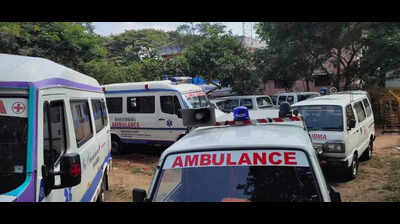Wait time for ambulance in Karnataka’s urban areas down from 22 min to 14 min | Bengaluru News

Bengaluru: In case of a health emergency, urban residents in the state can now expect 108 emergency ambulances to reach them faster. In 2023, the average wait time for an ambulance was around 22 minutes.Now, it is down to just 14 minutes in urban areas, including Bengaluru!Health officials credit the improvement to the replacement of old ambulances with new ones to the existing fleet. However, with regard to response in rural areas, the time taken is a bit more compared to urban centres. According to the data by the health department, on average, rural response time was 17 minutes. What explains this rural-urban divide? A senior official from the health dept said the improvement in urban response time is possibly due to addition of newly acquired ambulances. “The ambulance response time is expected to be within 20 minutes in urban areas and 30 minutes in rural regions. This renewed coverage allowed urban units to reach patients faster. However, the rise in rural wait times, though smaller, was attributed to geographic challenges.When we calculate the average, there are rural pockets where ambulances simply can’t reach quickly due to poor roads or remote terrain. These cases weigh down the overall average,” the official said.Interestingly, the total number of ambulances in the state has not changed, remaining at 715. This includes 289 Advanced Life Support (ALS) ambulances and 426 Basic Life Support (BLS) ambulances.To improve emergency response, health minister Dinesh Gundu Rao announced Wednesday that the govt will soon take over the operation of ‘108′ ambulance services, ending the current arrangement with private agencies. A private agency, EMRI Green Health Services, was in charge of managing all 715 ambulances across the state.He shared with TOI that the health department successfully completed a pilot project in Chamarajanagar district to operate the ‘108′ ambulance service independently. “From now on, the ambulances will be managed directly by the department. We will oversee the command and control systems ourselves. We’ve decided to exit the private agreement due to persistent issues; tenders were floated several times but couldn’t be finalised because of recurring problems,” he said.He added within the next three months, all ambulances in the state will be brought under this centralised control system, which is aimed at improving service delivery and strengthening the overall emergency response network.
















